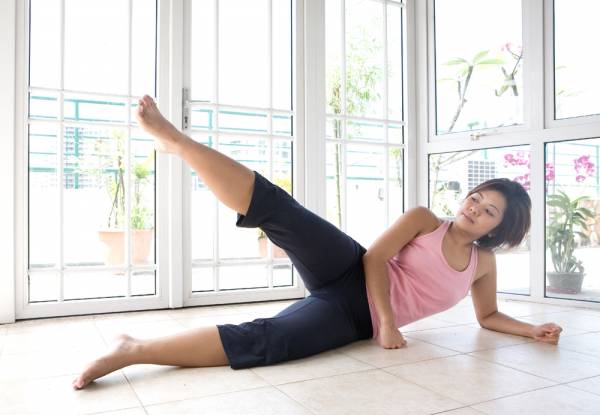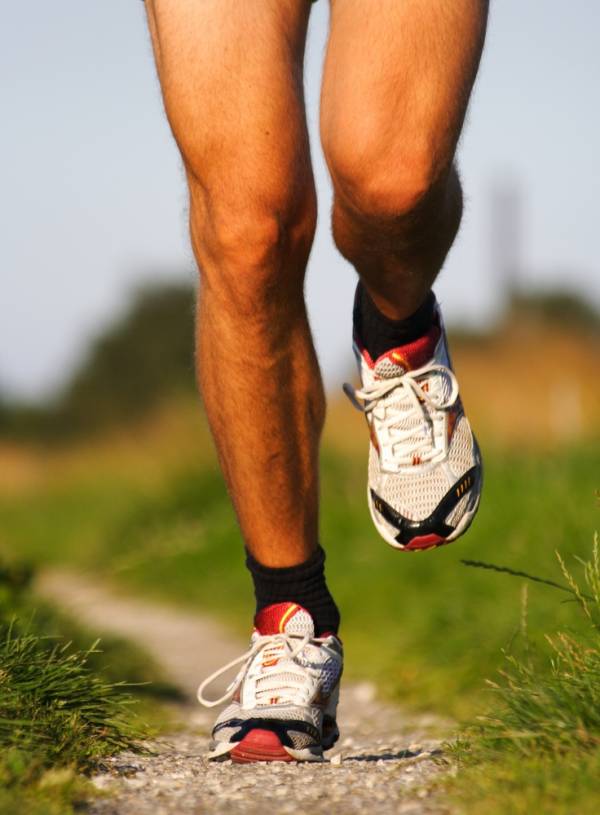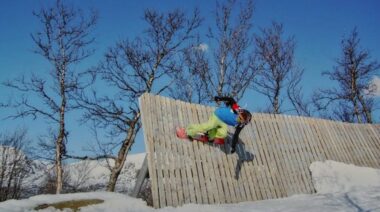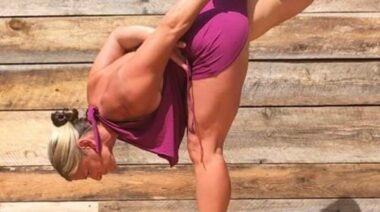Recently I looked back at an article I wrote in 2006 about ankle proprioception. It made me think how far we have come in six years. Initially, when I wrote that article, it was looking at the benefits of proprioceptive exercise as a means to help reduce the risk of an ankle injury. There was no real look at how other musculature is affected by doing such exercises. When I say such exercises, I mean things like single-leg balance on a DynaDisc, Bosu, foam pad, and their derivatives.
Now, there is so much more we know in terms of balance, stability and strength as it relates to an ankle injury. Now, a more global approach is taken to make sure an athlete gets the most out of his/her rehabilitation or preventative program. (Please note: If you are beginning a rehabilitation program for an injury, make sure there are no other underlying conditions, such as a hairline fracture, by seeking the appropriate medical care.)
What do I mean when I say global approach to rehabilitation? In this case, I mean looking away from the ankle and incorporating the entire body as part of the rehabilitation or preventative program. It is not only the ankle that helps to stabilize itself, but it is aided by the knee, the hip and the core.
The core is best described as the “lumbo-pelvic-hip girdle.” This area helps to stabilize our body in so many ways – posture, walking, running, sitting, etc. How has this affected the way I treat an athlete? Good question. The answer – I look to this area to see how it reacts as an athlete stands on a single leg.
The ankle, when injured, loses its sense of proprioception quickly. The recovery can be tricky. Originally, I used to only look at how the ankle was reacting as the person stood on the single leg. Now, I look to see if the knee is turning inward, the hip is rotating, or if the hip drops out. What does this mean if these things happen? Simply put, it means that other muscles within the kinetic chain are not capable of handling a functional load after an injury, or maybe the musculature was weak to begin with.
A key focus area in this whole picture is the gluteus medius. The gluteus medius is a smaller muscle within the posterior chain, responsible for hip abduction as well as hip stabilization. If this muscle is weak, the hip will drop out, the knee will turn inward, and the ankle will not be able to stabilize properly. As a result of this, the rehabilitation program for the ankle injury may need to include strengthening for the hip. This is how the global approach to care becomes a part of overall rehabilitation program.
I know, you’re thinking it’s only an ankle injury. Well, have you ever noticed while working with an athlete that he/she is not progressing as planned? Weakness in another part of the body may be part of it. How can this be helped? Simply put, add additional exercises for the gluteus medius or any other muscle imbalances that may be noted.
 The gluteus medius, albeit a smaller muscle, plays an integral part in the process of hip stabilization. The simplest way to work on strengthening this area is side-lying leg raises. I instruct the athlete to line his/her toes and heel together and lift from there. This causes activation of the gluteus medius.
The gluteus medius, albeit a smaller muscle, plays an integral part in the process of hip stabilization. The simplest way to work on strengthening this area is side-lying leg raises. I instruct the athlete to line his/her toes and heel together and lift from there. This causes activation of the gluteus medius.
Another simple way to improve strength to this muscle is to do clamshells. Here, the athlete has his/her knee bent and externally rotates the thigh while the feet remain in contact with each other. If properly done, this will cause some major ‘burning’ in the muscle. As strength becomes more apparent, more functional strengthening can begin. This incorporates balance with slight knee bend and focusing on getting the gluteus medius to “fire.”
I like having the athlete do two different types of exercise depending on his/her strength levels. During this whole process, the focus shifts to what the knee and hips are doing compared to what the ankle is doing. To start the athlete stands in front of a mirror and uses self-feedback to correct any positional errors that may occur. For example, while the athlete works on a step-up and step-down motion, he/she focuses on making sure the knee does not fall inward and the hips remain level. After a few repetitions of this, the athlete will usually comment on how they feel the muscle working. This is a good way to get more functional work/strengthening done to help with the ankle proprioception.
Another highly useful exercise is having the athlete balance on a single leg with a band around the opposite one. One the athlete has engaged the abs, gluteus medius and ankle stabilizers, the athlete is then asked to move the opposite leg causing the center of balance to shift based on band tension and direction. The athlete is asked to move forward, backward, sideways, and inward with the leg. Here, focus is on the lumbo-pelvic-hip girdle, knee position, and ankle stability. By incorporating multiple facets, the idea is to improve overall stability, performance, and reduce the chance of further injury.
 It’s amazing how over the years as we gain more knowledge through research, experimentation, and good old trial and error, we find how important it is to involve the body in rehabilitation. In this case, a more global approach to the lower limb injury can help to correct not only the major problem at hand, but also to help begin the process of correcting other biomechanical issues that may be affected by the kinetic chain.
It’s amazing how over the years as we gain more knowledge through research, experimentation, and good old trial and error, we find how important it is to involve the body in rehabilitation. In this case, a more global approach to the lower limb injury can help to correct not only the major problem at hand, but also to help begin the process of correcting other biomechanical issues that may be affected by the kinetic chain.
Today, it’s not about only treating the site of injury, but about treating the whole individual. When I say treating the whole individual, I mean looking at their movement, functional tests, and special tests that relate to the injury. If anything is noted as being abnormal, I try to educate the athlete about the importance of adding such exercises to his/her program to help enhance rehabilitation and ultimately performance.
In the end, the ultimate goal is to get an athlete back to playing as quickly and safely as possible. If, through simple education like this, I can get a person to realize the importance of strengthening our entire global and local systems, then I hope I have accomplished something good for that person.






